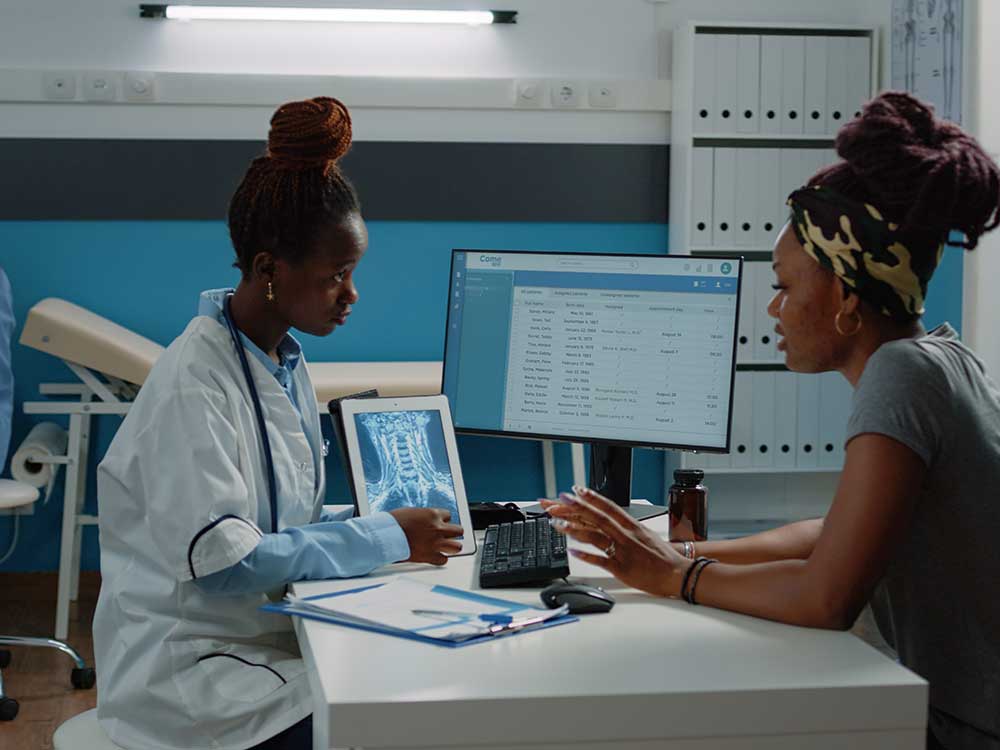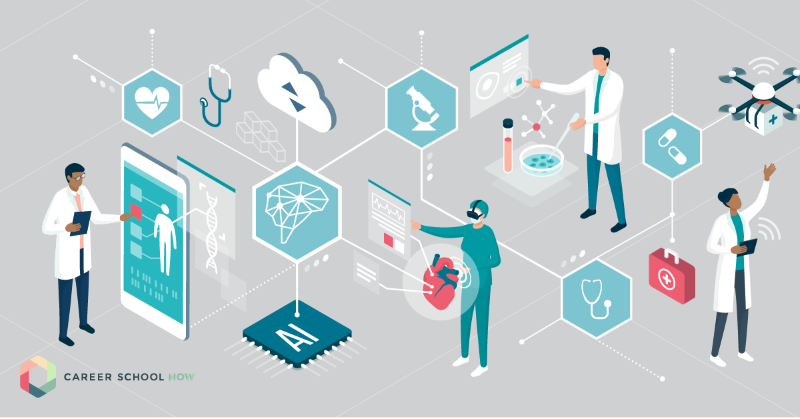The Future of Medical Administration: Trends and Developments to Enjoy
The Future of Medical Administration: Trends and Developments to Enjoy
Blog Article
Best Practices in Medical Management for Improving Effectiveness and Decreasing Costs
In the ever-evolving landscape of healthcare, the search of finest practices in clinical administration is paramount for boosting effectiveness and curbing expenditures. By integrating sophisticated technologies such as digital health and wellness records and telemedicine, doctor can simplify procedures and improve person care. However, modern technology alone is not a panacea; maximizing source allotment and cultivating collective communication amongst treatment teams are equally critical (medical administration). As companies aim to balance top quality and price, what techniques should be focused on to achieve these dual objectives? The solution to these questions hold the secret to a much more sustainable medical care system.
Leveraging Advanced Innovation
The combination of digital solutions right into health care systems has changed the way facilities run, enhancing processes and boosting individual care. By centralizing person details, EHRs get rid of the need for difficult documents and facilitate smooth communication amongst health care companies.
Telemedicine is another technical improvement that has changed individual interaction. It supplies benefit for both patients and medical care experts by enabling remote consultations, which can minimize the need for in-person visits and maximize appointment organizing. Furthermore, telehealth platforms can prolong healthcare accessibility to rural or underserved locations, bridging voids in treatment delivery.
In addition, making use of Expert system (AI) and machine understanding is coming to be progressively widespread in predictive analytics, allowing for early discovery of prospective health and wellness problems and more enlightened decision-making. These innovations, when incorporated successfully, can enhance diagnostic precision and personalize person treatment strategies, ultimately bring about improved healthcare results and functional performance.
Optimizing Resource Allowance
By purposefully handling resources such as personnel, equipment, and finances, medical care centers can substantially improve their operational performance, improve patient end results, and lower unneeded expenditures. The first action in enhancing resource allocation entails carrying out a detailed assessment of existing possessions and determining areas where sources might be underutilized or overextended.
Prioritizing source allotment based on person requirements and service needs is vital. This involves straightening sources with high-demand locations, such as emergency treatment or specialized treatments, to guarantee timely and reliable client treatment. Applying adaptable staffing versions can likewise optimize labor resources by adjusting workers appropriation in action to changing individual volumes. Additionally, welcoming telemedicine and other technical options can minimize physical resource restraints by supplying alternate avenues for patient-provider interactions.
Economic resources must be meticulously monitored and designated with tactical insight to support both short-term functional needs and lasting institutional goals. This consists of investing in training programs that boost staff proficiencies and taking on energy-efficient practices that decrease functional prices (medical administration). Ultimately, a maximized source allotment approach promotes a sustainable healthcare atmosphere that is responsive, effective, and economically prudent
Streamlining Workflow Procedures
When health care centers aim to improve operational effectiveness, streamlining operations procedures becomes a crucial focus. Effective process reduce redundancy, get rid of unnecessary steps, and boost control amongst health care experts. This method not only speeds up solution distribution yet likewise enhances the quality of person treatment.

Next, modern technology integration plays a considerable function in simplifying workflows. Carrying out digital health and wellness documents (EHRs) and electronic medical professional order entrance (CPOE) systems reduces documentation, decreases human mistake, and makes sure info is easily accessible to all appropriate personnel. In addition, leveraging telemedicine platforms can streamline person appointments and follow-ups, minimizing the pressure on physical framework.

Ultimately, structured operations bring about set you back decreases and boosted person satisfaction, fostering a more lasting medical care setting.
Enhancing Information Administration
Building upon useful content streamlined workflows, optimizing data management becomes an important component in advancing health care administration. Reliable information management systems are important for maintaining exact person records, improving decision-making, and ensuring conformity with regulative standards. By applying durable data monitoring options, healthcare centers can improve the quality of person care while concurrently decreasing functional expenses.
One key element of improving data monitoring is the combination of sophisticated digital wellness document (EHR) systems. These systems assist in the seamless exchange of client information throughout different divisions, decreasing replication of tests and decreasing errors. A well-designed EHR system sustains data analytics, enabling health care carriers to determine trends and make educated choices relating to client treatment.
Furthermore, guarding client information is paramount. Embracing thorough cybersecurity measures, including security and regular audits, makes sure the honesty and privacy of sensitive info. This not just secures people however additionally maintains the organization's credibility.
Buying staff training is an additional crucial aspect. Educating health care specialists on data management methods enhances their capability to effectively make use of innovation, causing improved client outcomes. To conclude, boosting data monitoring through innovative modern technology and detailed training is important for accomplishing effectiveness and cost decrease in medical administration.
Fostering Collaborative Interaction
A crucial part in progressing medical administration is promoting collaborative communication among healthcare experts. Reliable communication is critical for ensuring seamless individual treatment, optimizing therapy outcomes, and minimizing errors. By motivating open discussion and coordination across multidisciplinary teams, healthcare organizations can improve their functional performance and decrease unneeded expenses.
Central to this strategy is the integration of communication technologies such as electronic health and wellness documents (EHRs) and safe messaging systems, which promote the rapid exchange of important client details. go to my blog These tools enable doctor to access and share information in genuine time, ensuring that all staff member are educated and lined up in their decision-making procedures. Regular group conferences and interdisciplinary rounds can even more advertise a culture of cooperation and accountability.
Educating programs focused on boosting communication abilities are also vital. These programs can help team establish the capacity to convey details clearly and pay attention actively, therefore minimizing misconceptions and promoting a helpful workplace. Additionally, adopting standardized interaction protocols, such as SBAR (Scenario, Background, Evaluation, Recommendation), can enhance the exchange of information, making sure that critical information are shared this content succinctly and efficiently. Eventually, fostering collective interaction results in boosted healthcare shipment and cost savings (medical administration).

Final Thought
Integrating innovative technology, such as digital wellness documents and telemedicine, alongside enhanced source allocation and streamlined operations procedures, is vital for enhancing effectiveness in clinical management. Efficient data management and promoting joint communication amongst medical care groups are critical for reducing redundancies and improving care top quality. By focusing on preventive treatment and involving in high quality enhancement efforts, health care organizations can accomplish considerable expense savings and improved patient outcomes, thus guaranteeing sustainable healthcare delivery in an increasingly complex environment.
Report this page